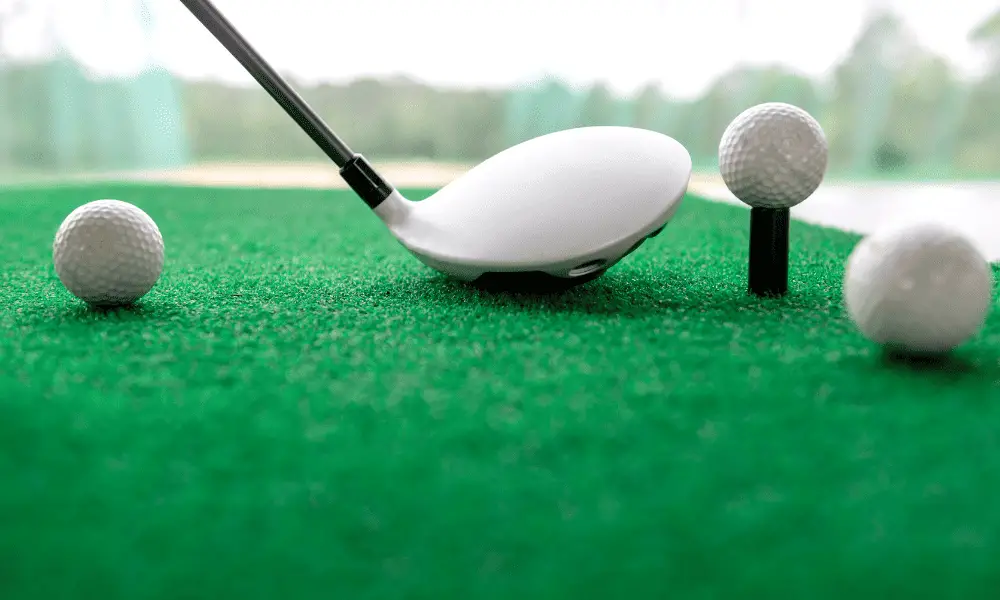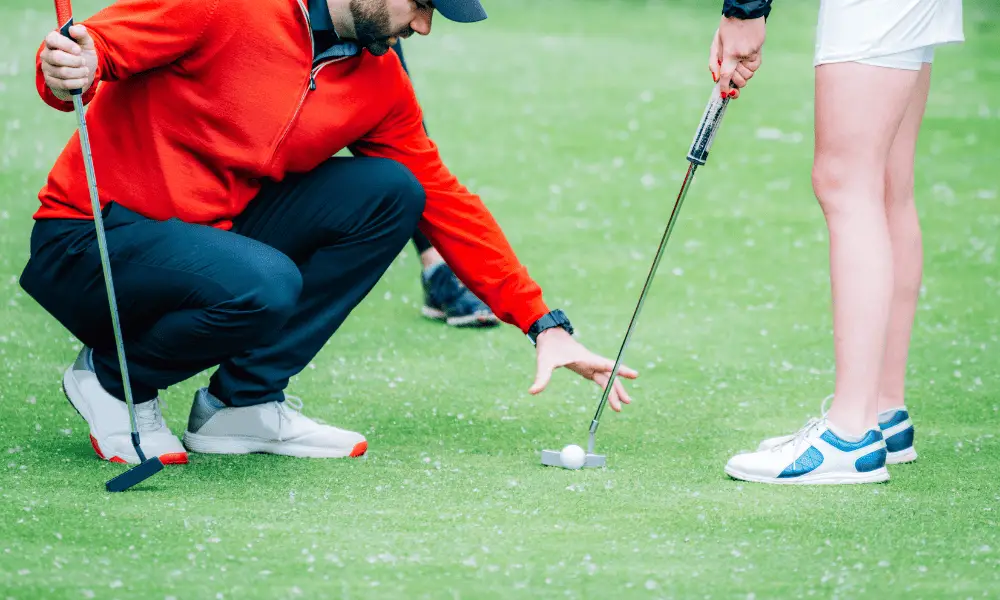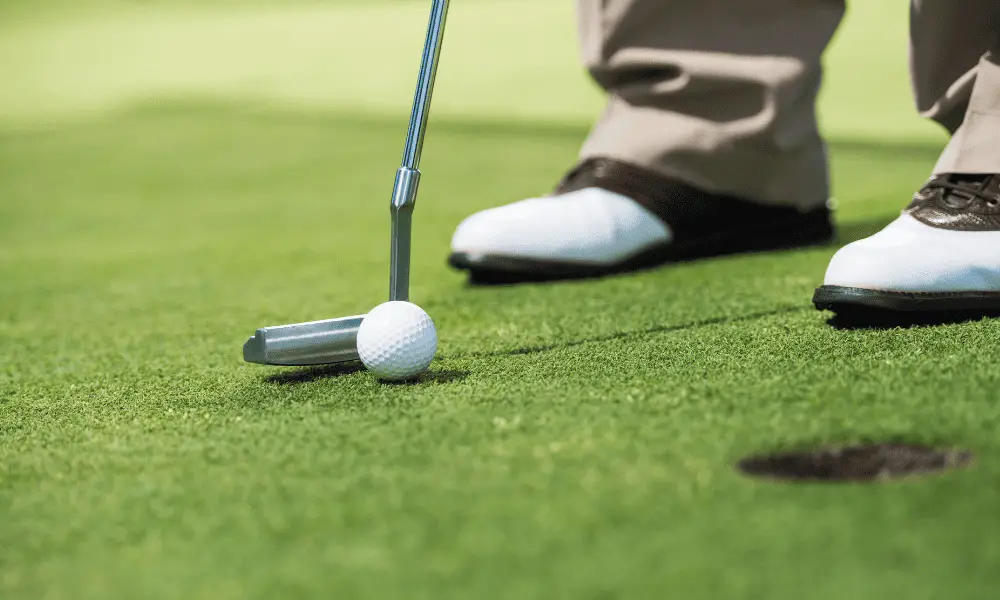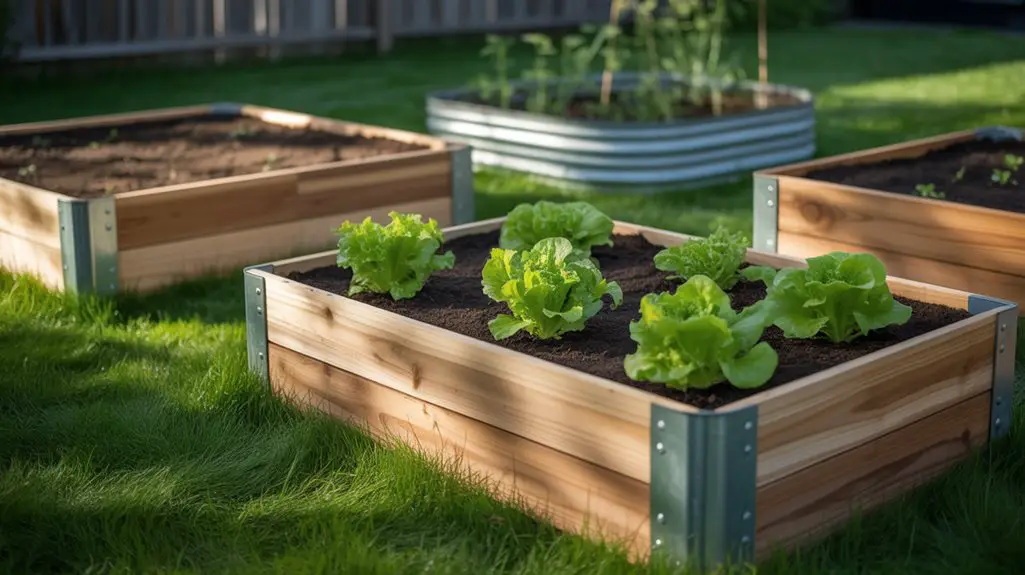You’re standing on the 18th hole, club in hand, and victory within reach.
But as you swing, your ball veers off course, causing you to lose the game. It’s a situation you’ve experienced all too often and it leaves you questioning your golf skills.
If only there was a way to practice at home so that these frustrating moments would become a thing of the past. Well, you’re in luck because this article will provide detailed instructions on various backyard golf drills to refine your technique.
Picture perfecting your swing from the comfort of your own backyard or improving accuracy without setting foot on the green. Imagine mastering chipping techniques right next to your flowerbeds or enhancing sand trap skills in a sandbox-turned-bunker.
What if we told you that increasing drive distance and accuracy wasn’t limited to hours spent at the driving range?
Yes, all of this is possible with some dedication and resourcefulness!
Dive into our comprehensive guide for tailored tips and tricks designed specifically for practicing golf at home – making every round on the actual course seem like child’s play!
Perfecting Your Swing at Home

With just a club and some determination, you can perfect your swing right in your backyard, feeling the satisfying thwack of contact as the ball sails through an imaginary fairway.
Begin by focusing on grip adjustment. Grab your club gently; imagine holding an open tube of toothpaste without squeezing anything out.
The ‘V’s formed by your thumb and forefinger should point towards your right shoulder if you’re a right-handed golfer or towards your left shoulder if you swing from the left.
Next, shift to stance optimization. Your feet should be aligned with the target line, spaced about hip-width apart for iron shots and slightly wider for driver shots to ensure stability during the swing. Bend at the hips, not at the waist – this is key to maintaining balance throughout your swing.
Keep in mind that while making these adjustments may feel awkward initially, they are essential steps toward developing a more accurate and consistent golf swing.
The last critical aspect to consider when perfecting your swing at home is patience. Like any skill worth mastering, improving your golf game requires dedication and time.
Practice daily but remember not to overdo it; small increments of focused practice will produce better results than long hours of mindless repetition.
Use every drill as an opportunity to focus on one particular aspect of technique – whether it’s grip adjustment or stance optimization – until it becomes second nature. Remember: Rome wasn’t built in a day – neither are golf champions!
Improving Putting Accuracy

Ready to shave off those extra strokes from your game by tightening up your putting accuracy?
Improving your putting skills in your backyard can be a game-changer. First, let’s focus on grip techniques.
A solid grip technique is the foundation of a good putt. The most popular grips among golfers are the reverse overlap, the cross-handed, and the claw. Experiment with each style and find out which one suits you best.
To provide a more detailed overview of these three grip techniques, here’s a breakdown:
| Grip Technique | Description | Key Benefit |
|---|---|---|
| Reverse Overlap | Provides great control during the swing motion. | This unique method involves gripping the club with the fingers of the top hand and the palm of the bottom one. |
| Cross-Handed (or Left-Hand-Low) | This unique method involves gripping the club with the fingers of the top hand and the palm of the bottom one. | This unique method involves gripping the club with the fingers of the top hand and palm of the bottom one. |
| Claw | Helps keep wrists firm through the stroke. | Great for reducing wrist action and improving alignment. |
Now that we have covered grip techniques thoroughly, it’s time to move on to reading greens – another critical aspect of successful putting. Reading greens involves understanding how the ground’s slope will impact the ball roll direction after hitting it with your putter.
Practice observing grass textures and directions as they can offer clues about slope angles and break intensity on real greens.
Remember that these tips are just starting points in fine-tuning your putting accuracy at home or on course play. Continual practice is what separates an average golfer from an excellent one.
Don’t forget to tweak and adjust based on what works best for you because, ultimately, golf is about personal finesse as much as technique!
Chipping Practice Techniques

Improving your chipping skills can undoubtedly knock a few strokes off your game, don’t you think?
Chipping is part of golf that connects your long game to putting; it’s the bridge between the green and the hole, so it’s crucial to practice.
One technique for improving your chipping is incorporating club selection strategies into your practice. Different clubs produce different heights and distances. Understanding this will help you make better decisions when faced with various situations on the course.
You can start by practicing with a variety of clubs in your backyard. Here are some drills:
Ball positioning tips are also essential in chipping practice techniques. If you position the ball too far back in your stance, you might hit it too low and end up short of the target; if it’s too forward, you might hit it too high or thin and overshoot the target.
A good rule of thumb is to place the ball center or slightly back in your stance for standard chips.
Remember, every golfer has their unique style, so what works best for one person won’t necessarily work best for all.
The key here is to experiment with different club selections and ball positions until you find what feels most comfortable and produces consistent results for you.
With these techniques applied consistently during backyard drills, improvement is sure to follow suit – bringing those golf scores lower than ever before!
Enhancing Sand Trap Skills

Did you know that approximately 20% of all shots in a round of golf are played from the sand?
That’s right, so brushing up on your bunker play could significantly reduce your scorecard numbers.
Therefore, it’s essential to cultivate a positive bunker mindset. Fear and dread can negatively affect your performance when faced with sand traps. Instead, view each bunker as an opportunity to show off your improved skills and tactical approach.
Remember, confidence is a crucial part of any successful golf shot.
The choice of the right sand wedge plays an instrumental part in enhancing your sand trap skills. The optimal sand wedge should have a bounce angle between 10 and 14 degrees for typical backyard practice conditions.
This specification helps facilitate the club sliding under the ball without digging into the sand too much – which is key to getting out of bunkers effectively.
Additionally, consider wedges with wider soles because they offer more forgiveness in heavy sands by preventing the club from cutting too deeply into them.
Building upon these basics, there are several drills you can incorporate into your backyard practice sessions to improve bunker shots further.
First off, try drawing lines in the sand about two inches behind the ball and focus on hitting this line during swings; this will help ensure you’re making contact at the correct point relative to the ball position for a successful launch out of a trap.
Another effective drill involves practicing with one hand (dominant) while keeping the other behind the back – this promotes better wrist hinge during the backswing, which leads to increased height on shots out of bunkers.
Just remember not to get frustrated if progress seems slow – mastery takes time but pays off exponentially once achieved!
Increasing Drive Distance and Accuracy

When it comes to stepping up your game, increasing your drive distance and accuracy can give you a significant edge over your rivals. In the realm of golf, these two factors are pivotal in determining how well you perform on the course.
To achieve this feat, one essential factor that needs meticulous attention is club selection. The right club can be a game-changer; it influences not just how far but also how accurately you can hit the ball.
Club Selection is crucial for enhancing both distance and precision. A driver with a higher loft helps increase the launch angle and reduce the spin rate, thereby improving distance.
At the same time, selecting a shaft with the correct flex point aligns with your swing speed, ensuring better control over directionality.
On the other hand, Ball Positioning plays an indispensable role as well when we talk about adding yards to our drives while maintaining accuracy. Always remember that placing the ball too forward or backward in your stance could lead to hooks or slices.
Applying these strategies doesn’t mean results will come overnight; consistent practice is key here, just like any other sports skill improvement plan.
Start by making small adjustments to your club selection process based on what works best for you rather than relying solely on generic advice or traditional rules of thumb.
Experimentation coupled with focused practice sessions should lead you towards finding what maximizes both distance and accuracy for you personally on drives.
Similarly, work diligently on ball positioning until you find that sweet spot where most of your shots fly straight while reaching the maximum possible distances for your strength level and swing style characteristics.
Conclusion
In fact, a staggering 80% of golfers never achieve a handicap below 18. And that’s where backyard drills, like the ones you’ve been practicing, play a pivotal role.
They’re not just fun and engaging; they’re also instrumental in improving your game. Keep swinging, putting, chipping, and driving right there at home.
Each stroke brings you closer to mastering this beautiful sport. Remember, it’s not about being perfect but consistently getting better.
Your dedication will pay off!




